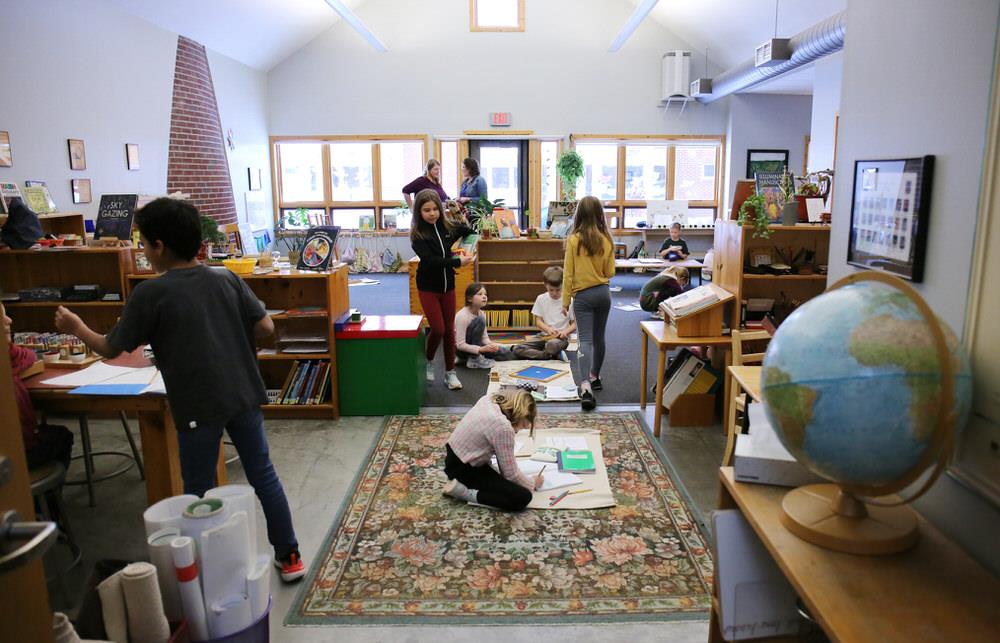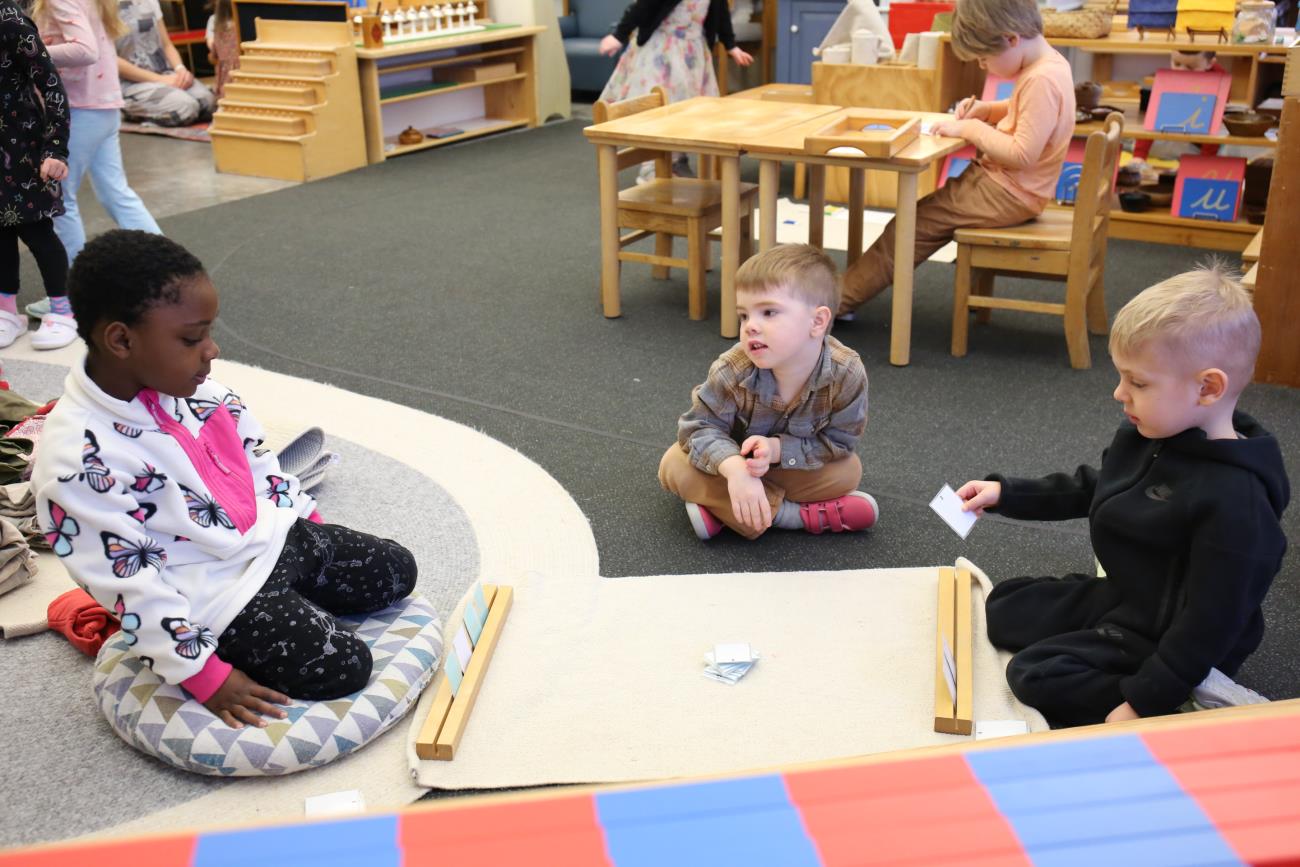In June 2022, The Children’s House became an accredited member of the Independent Schools Association of the Central States (ISACS). Obtaining membership was a lengthy process in which every staff person and many other members of the community participated. Membership in ISACS is not a once-and-done process but enters the school into a continual cycle of accreditation and improvement. There are many reasons why being an accredited member of ISACS is valuable to the school community.
Who is ISACS?
ISACS is a non-profit organization that serves more than 240 member schools in thirteen states. The mission of ISACS is to lead schools to pursue exemplary independent education. Its vision is that ISACS schools empower all students to contribute and thrive in a diverse and changing world. Its core values are equity, integrity, and continuous improvement.
Why is accreditation important?
ISACS accreditation allows The Children’s House to reflect, learn, and grow as a community. It forces the school community to set aside time dedicated towards improvement based on what the school has been doing well, and opportunities that arise. It gives the staff a process to paint others a picture of what TCH strives to accomplish as a school community.
Accreditation is a group effort. To complete the process, it takes participation by the entire staff, and the wider school community including board members, parents, alumni, and donors. This is the one time in the community when everyone comes together to identify the school's strengths, acknowledge its challenges, and establish the priorities for school improvement moving forward. This collaborative process focuses on the entire institution, not the individuals within it.
Accreditation holds The Children’s House accountable for giving families the education that is promised when they tour and enroll. The self-study is a 100+ page report written every seven years and documents the school’s purpose and goals, its strengths, challenges, and plans for the future. The self-study is made up of many small reports, each examining different aspects of the school such as governance, curriculum, the community, administration, etc. The self-study is followed up by a visit of peer educators from other ISACS schools. This peer-review committee evaluates whether TCH is carrying out its mission and vision for educating. It allows others to take a deep dive within the organization, and make recommendations for school improvement based on observations and the self-assessment. The peer-review committee makes sure that TCH adheres to the ISACS Standards of Membership, which are elements that should be common to all independent schools. Opening up the school to this rigorous and continual review process gives it credibility and assures its integrity.
Seven-Year Cycle of Accreditation
Every year, the school is in a different stage of the 7-year accreditation cycle. Year one is preparation for the accreditation, which includes a school-wide survey. This is followed by the self-study process in year two. The following year is the year of accreditation when the self-study is published and an accreditation team visits the school. Year four gives the school time to write a reaction report to the ISACS Accreditation Review Committee and make plans for improvement. Years five and six are used to implement any changes and track the school’s progress. Year seven offers a year of review and reflection on what has been done in anticipation of the next accreditation cycle. The Children’s House is currently in Year 5 of its accreditation cycle.
Being an ISACS member school makes a statement that TCH is a school that takes learning and growth seriously. It gives the school community a larger independent school group that values this as well. TCH faculty have the opportunity to observe and review other schools. They can learn best practices from a larger network of educators. ISACS offers great learning opportunities for parents, administrators, and board members. The accreditation process makes the entire community lifelong learners, working together towards improvement. It is just one of the ways that The Children’s House works to fulfill its mission to the best of its ability, to prepare a Montessori environment that supports and respects the development of each unique child and nurtures them to become independent, curious, confident, lifelong learners who strive to contribute to their communities and the greater world.
Traditionally, school quality is judged by class size. Many believe a lower teacher-student ratio means more individualized attention and larger class sizes are thought to be a sign of less instructional time. This perception is founded on the idea that children learn more when they are one-on-one with an adult. Traditional schools view teachers as knowledge transmitters and children as empty vessels waiting to be filled. Montessori schools turn this accepted theory on its head. You won't hear us promoting small class sizes at The Children's House because we know larger communities with specific principles in place promote a different kind of individualized learning - one that educates children for life. Primary and elementary classrooms have around 25 children, so how do we do this and make sure each child's interests and needs are being met?
1. We have mixed-age classrooms.
Children stay in Montessori classrooms for at least three years. This creates communities of mixed ages, which means there are a variety of needs in one classroom and the guide is not overwhelmed by many with the same need at the same time. It also means younger children have older peers to model behavior, teach lessons, and facilitate problem-solving. Peer-to-peer relationships not only alleviate the need for adult help but also allow older peers to solidify their learning and develop leadership skills. Montessori guides don't aim to be constantly available to children because it leads to dependence on adults. They do, however, nurture mixed-age relationships so children become comfortable solving problems on their own, debating, listening to other perspectives, offering help, and having responsibility within a community. These are lessons they can take with them outside of the classroom.
2. We offer self-correcting materials.
Larger student-teacher ratios work because Montessori teachers don't need to be as available to correct children's mistakes. The materials do most of the work. Many Montessori materials were scientifically designed to have a built-in control of error. This means the material gives the child feedback about their work without adults having to say a word. For example, the Cylinder Blocks in a primary classroom have 10 cylinders and 10 corresponding crevices. If a child completes the puzzle and a cylinder is left at the end, he automatically knows he needs to try again. Students at almost every level also use ceramic and glass dishes. If they fall and break, the student receives feedback about their movements without an adult having to step in.
3. We promote intrinsic motivation rather than rewards and punishments.
Montessori guides are careful to nurture children's inner desire to do well. When a child feels a sense of ownership and belonging in their environment, teachers don't have the task of doling out rewards and punishments in hopes the class will obey out of fear. A large community of intrinsically motivated children creates a natural system of checks and balances. They hold each other accountable, removing the traditional teacher's time-consuming job of keeping up with sticker charts and bad grades. Even better, children carry this inner drive to succeed and help the greater good when they leave the classroom.
4. We shift the focus from the adult to the child.
When an entire class is listening to an adult teach the same concept, the students either move along together or individuals are left behind or unchallenged. Whole group learning means teachers are required and their time is a limited resource. Montessori classrooms shift the focus from the teacher to the student. Learning is set up to happen individually, in small groups, and from peers. When children are set up to learn from each other rather than with each other, interests are honored and instructional time is amplified. If this principle were applied in a small classroom, students look to their teacher for guidance and the teacher would be tempted to over-correct, interrupt concentration, and solve their problems.

